Online marketers are desperate to find the secrets behind audience engagement. They want to know how to increase traffic and engage visitors, so they don’t leave without tapping the call to action. Today, we’ll dive into some little-known tips that go beyond “knowing your targeted audience.”
We are finally going to solve those riddles and learn some new tricks to help you learn:
- how to draw the audience into your stories;
- how to ignite the spark with your message;
- how to emotionally connect them with your content;
- how to leave a long-lasting impression;
- and most importantly, how to make your customers click the call to action.
But before we do that, let’s briefly touch on what audience engagement is and why it matters?
What is audience engagement?
In layman’s terms, audience engagement is the level to which your target audience is interested or actively involved in your content.
If your engagement is low, the implication is you’re not offering the audience what they really want. You’ll also struggle with return visitors due to the absence of substantial interest.
Meanwhile, high audience engagement refers to people liking your content enough to invest some time in it and interact further.
Why does audience engagement matter?
Let’s say Jonathan loves your content. He reads every post, gets other readers talking in the comments, and is the perfect ideal of your desired customer. He’s undoubtedly going to linger around and interact further, eventually becoming your customer.
Enhancing audience engagement is similar to attracting visitors like Jonathan because engaged users trust your brand. They frequently visit your website, explore more pages, and are more willing to sign up or subscribe. And most importantly, they probably turn into paid customers.
Generally speaking, an engaged audience is a satisfied audience. The last thing you want is prospects skimming through your content without showing any eagerness or engagement.
To avoid this, you must not create eye-catching content but also insert opportunities for your target audiences to engage.
I am about to show you how to do just that.
Top 10 methods to boost audience engagement
Customers don’t just appear on your site ready to buy, they need to be cultivated through 6 to 8 solid engagements until they convert. And most of them are immune to traditional advertising strategies. Below you’ll learn some little-known practices that you can use to catch and nurture their attention before your competitor does.
Define your metrics
Before delving into what engagement strategies to apply, you’ve got to define how you measure audience engagement. You can use various numbers, like page views, email open rates, or Facebook interactions. While you don’t need to consider each metric, make sure that your audience engagement metrics align with your company’s goals.
For instance, imagine that lead generation through content is your most important business goal. You publish a blog post. The desired action could be purchasing a subscription to your service. Measuring the click-through rates on that blog is critical to understand how your content is performing. Take this a step further by tracking how many of those clicks lead to conversion.
To make it simple, let’s take a look at the most common audience engagement metrics you can track:
- average session duration: the average amount of time each user’s “session” lasts.
- bounce rate: the percentage of people opening a website page and leaving without exploring any other page.
- number of pages per session: the number of pages your audience viewed in a single session.
- returning vs. new visitors: the number of returning visitors as opposed to new ones.
- shares from content: the number of shares from the audience viewing your content.
You can easily measure these elements through Google Analytics in real-time.
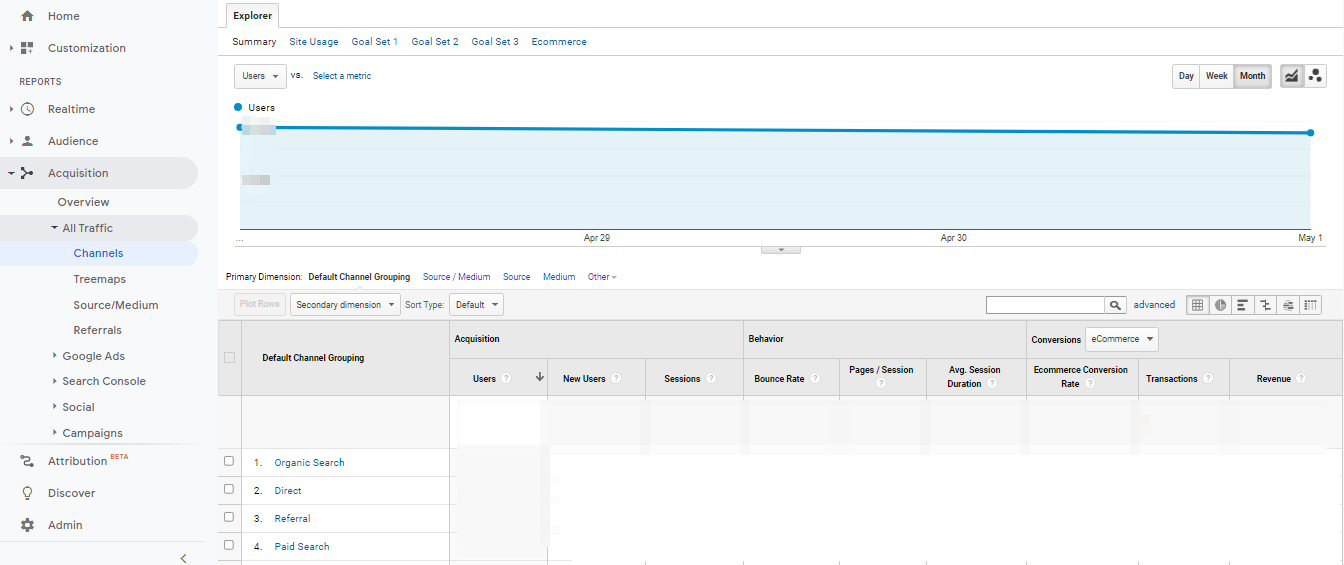 An example of how to measure your engagement metrics in Analytics
An example of how to measure your engagement metrics in Analytics
These metrics and their relevance will change based on your business model and the actions you want your audience to take.
Use website personalization for a longer on-site stay
With approximately 64% of small businesses having websites, getting your website noticed in the jam-packed market can be challenging. Besides, Google loves websites that exhibit strong user engagement.
What if you could boost the effectiveness of your website and make it stand out at the same time?
Well, you can, with the help of website personalization. Website personalization refers to different tactics businesses use to customize their website based on visitor’s interests, needs, and buying habits. It comes with extra SEO benefits like a low bounce rate and higher engagement.
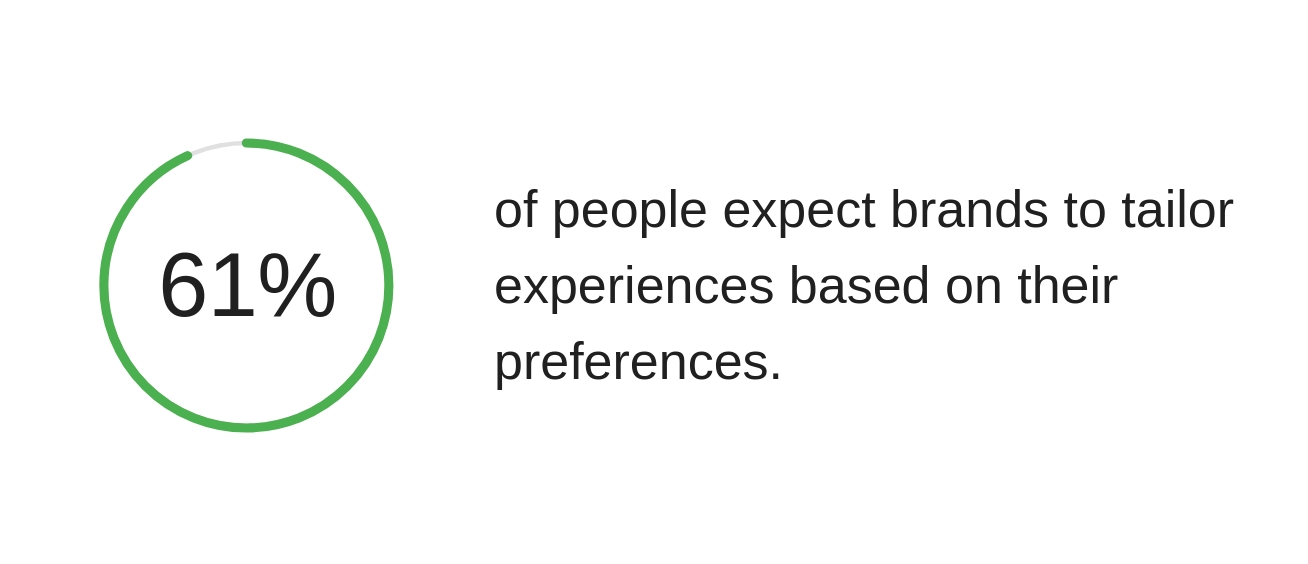 Google/Greenberg study on rising expectations in consumer brand experiences; source: Think with Google
Google/Greenberg study on rising expectations in consumer brand experiences; source: Think with Google
Another way to personalize your website is by enabling your visitors to choose their own adventure.
Allow your audience to choose their own experience
Putting choices on your landing page that allow your visitors to travel in different directions, based on their preferences, increases the likelihood that they will stay on your site. Naturally, more time on your site enhances engagement and gives you the freedom to create more opportunities to track their interactions. Furthermore, it makes room for the commitment of future visits.
Forbes UNDER 30 offers various categories to explore, ranging from Art and Style to Finance. Visitors have the opportunity to choose a specific category or jump between them, crafting their own experience.
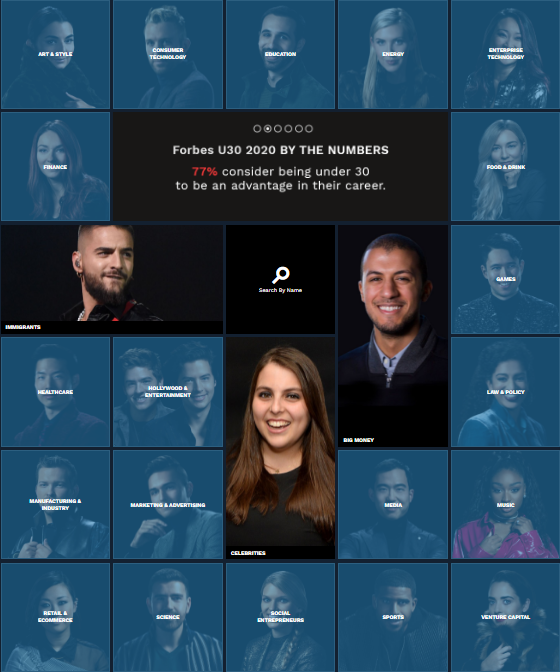 The Forbes U30 website allows visitors to create their own website experience
The Forbes U30 website allows visitors to create their own website experience
While applying this tactic, make sure visitors recognize the action you want them to take (i.e., clicking, signing up, subscribing, coming back, etc.) before they depart the webpage.
For website personalization, you often need technical skills that can be tough if you don’t have the right resources. Don’t fret! You can use personalization tools to auto-customize your content according to your customers’ attributes and behaviors. No code solutions like Hyperise allow you to implement website personalization without going through the hassle of coding.
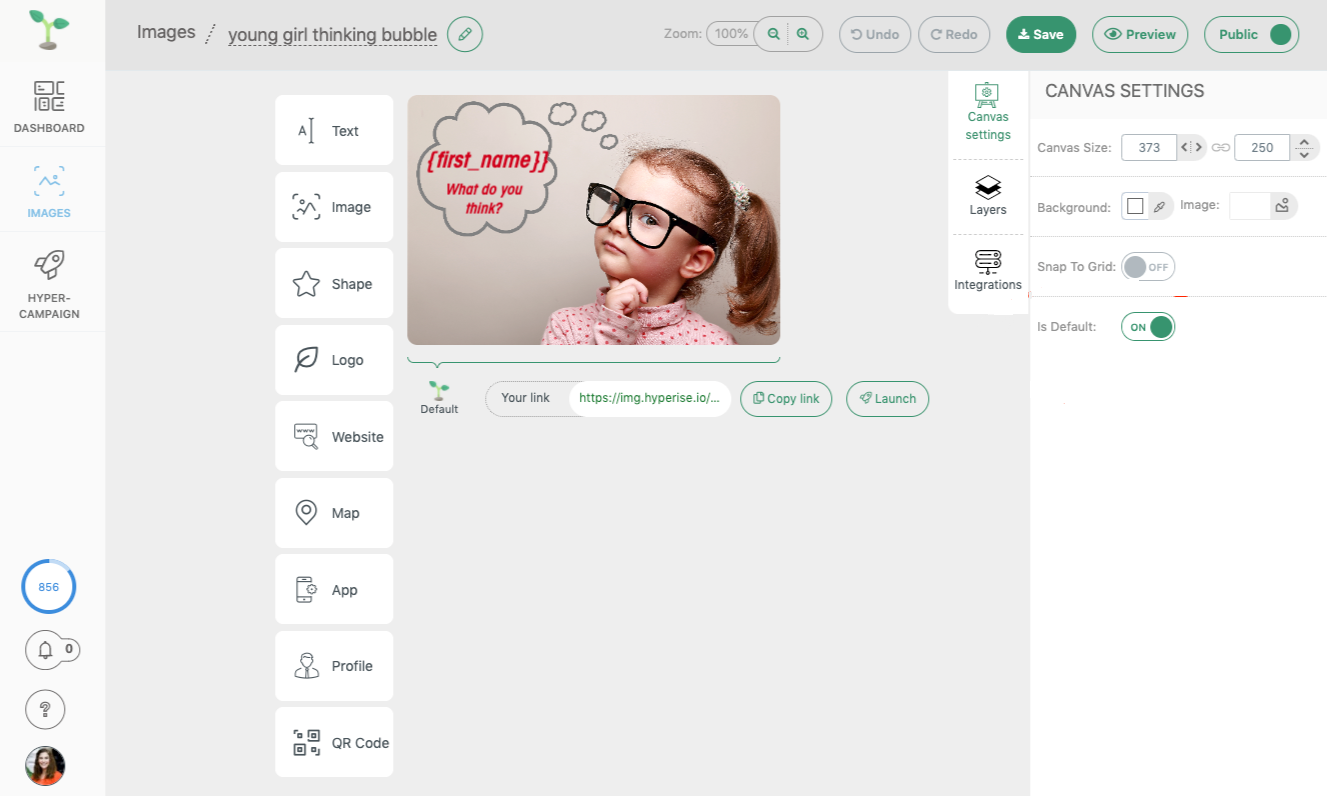 No code solution to dynamically personalize your website; source: Hyperise
No code solution to dynamically personalize your website; source: Hyperise
Engage on site via live chat
Another fool-proof way to improve engagement on-site is via live chat. Live chat has become a preferred mode of communication for customers, with a whopping customer satisfaction level.
Live chat is an excellent way to give your audience exactly what they need to make a purchase decision. By eliminating the waiting or wandering process — like waiting for an email or social media response — you are offering a better overall customer experience and also decreasing their chance of leaving your site without the thought of ever returning.
For an easy start, you can install a live chat plugin into your website that displays the support person’s name and image and incorporate a conversational chat.
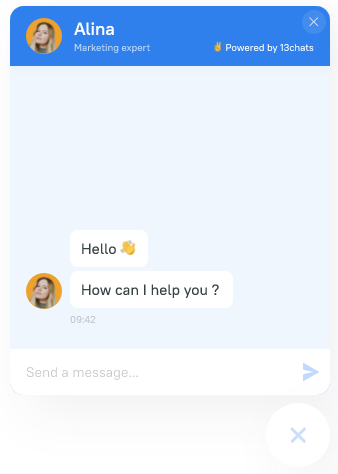 Example of a live chat; source: 13chats
Example of a live chat; source: 13chats
Create memorable interactions with Facebook chatbots
Messenger is one of the most preferred apps to stay connected with friends, family, and brands. There are 1.3 billion active users that companies can reach through Messenger with the help of chatbots.
Chatbots communicate with clients through Facebook Messenger. Using chatbots on Messenger allows businesses to get in touch with customers on their favorite platform.
Messenger chatbots can have relevant conversations, recommend personalized products, and deliver content depending on the customer’s specific choices. This unique experience promotes your brand and boosts engagement from the first touchpoint to the last.
Want to see the chatbots in action? Check out some
examples of chatbots businesses use to engage with their customers.
For non-techies, the idea of having a Messenger bot is impressive, but the thought of implementing it can be a little daunting. Fortunately, it doesn’t have to be like this. It takes only four steps to create a Messenger chatbot with SendPulse:
- Register with SendPulse.
- Connect your Facebook page with SendPulse.
- Build a conversation scenario using mind mapping software.
- Create a chatbot flow.
Leverage the fear of missing out (FOMO)
Eventbrite stated that 69% of millennials encounter FOMO fueled by social media sharing and updates. The thoughts of friends having fun without you always lingers in the air.
This example shows how to use FOMO with an exclusive resource that is only available for a limited time.
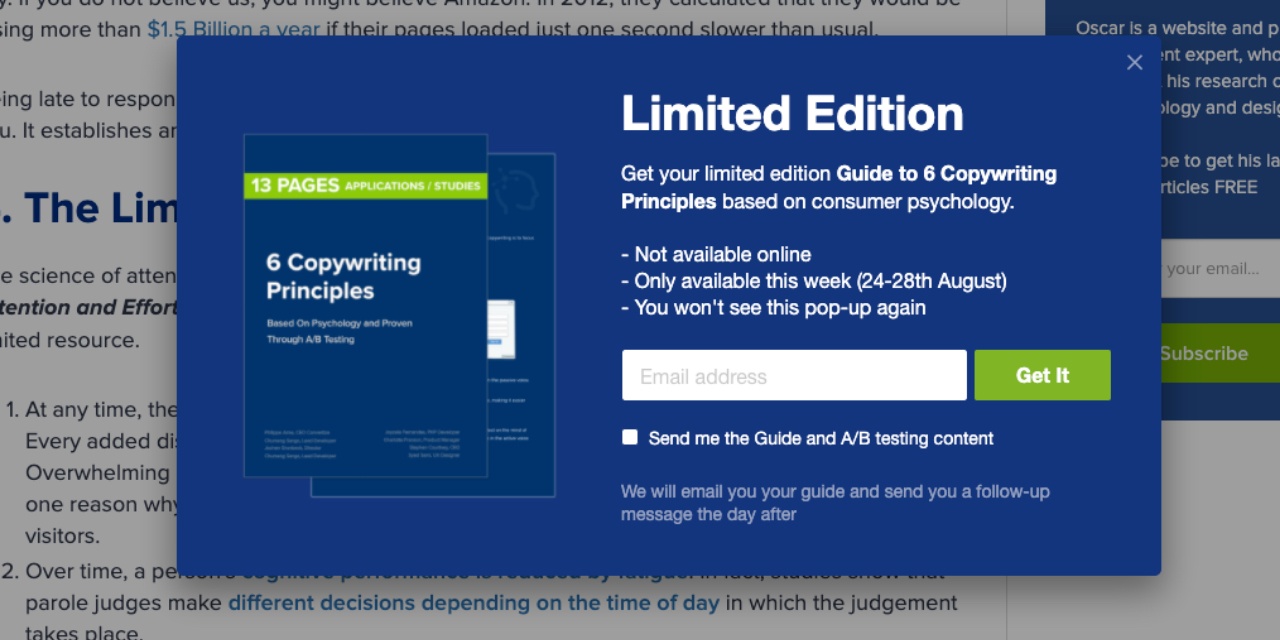 Example on how to use FOMO to generate leads; source: Nudgify
Example on how to use FOMO to generate leads; source: Nudgify
Keeping that in mind, you can use this psychological phenomenon to boost audience engagement! You simply need to change the way you communicate with your prospects.
Here are a few tactics to leverage FOMO, enhance your engagement levels and conversion rates up to 305%, and ultimately improve your sales:
- optimize videos with titles like “if you watch this video today;”
- set a time limit or deadlines like the last few seats left;
- use social proof near the “buy” button when consumers are about to make a purchase decision;
- quote influencers or celebrities that promote your brand and products;
- showcase all the opportunities that your subscribers will miss if they don’t take action.
Caution: You need to be careful when trying to leverage FOMO. Make promises that you can fulfill. Don’t manipulate your target audience for more clicks.
Sign your content
We all are social media addicts for a reason. It’s people. It’s a craving to belong to something and develop relationships. So, if you want to engage your potential customers, you have to humanize your content.
Putting a name (an actual human name) on your blog posts, LinkedIn messaging, or any other social media messaging is an easy yet effective way to add a human face to your brand. The concept is to give your audience an image of the person they’re talking to, creating a more personalized interaction.
People want to connect with real people. Even something as simple as a still image can help users recognize and relate to your brand.
SourceKati Noakes
Founder KN Comms Social Media
If you address a
B2B audience and reach out through Linkedin, you can use
dynamic LinkedIn personalization to humanize your messages. Apart from adding first and last names to your LinkedIn messages, the tools also personalize your images and GIFs to instantly catch users’ attention.
Dynamic image personalization works also for LinkedIn outreach; source: Expandi
Image personalization tools automatically fetch your targeted audience’s profile picture on LinkedIn and add them to your messages.
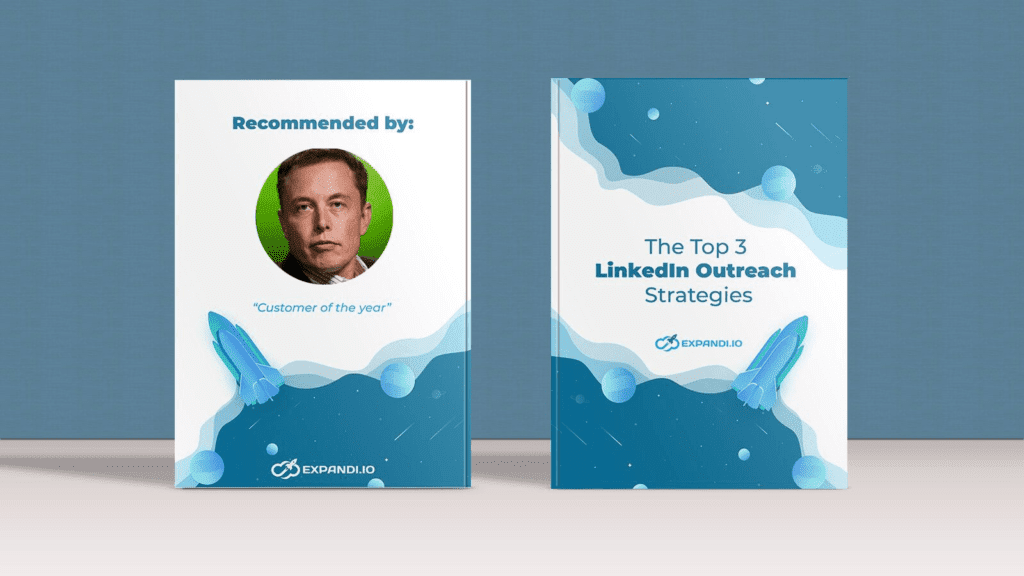 Add recipient’s LinkedIn profile in your personalized images to catch attention; source: Expandi
Add recipient’s LinkedIn profile in your personalized images to catch attention; source: Expandi
Engage with webinars and online courses
Webinars are another great way to engage your B2B visitors early in the buying process and generate qualified leads. Hosting a webinar positions you as an expert in your industry and helps you outshine your competitors. Unlike promoting videos or publishing eBooks, webinars enable you to interact personally with your audience, build rapport, and develop trust at a fast pace.
Make sure to read our post about
webinar emails to find plenty of examples and tips to make your webinar email series as successful as possible.
You can answer any question on the spot, bring your unique perspective to the front, and draw those attracted to your solutions further towards the funnel. Hosting webinars sounds interesting, but they are challenging too.
The right webinar software platform smooths out your entire experience. Again, there’s not a one-size-fits-all solution. But here are some things to consider while picking webinar software:
- Is it easy to use?
- Does it offer features for recording, sharing, and following up with prospects?
- How many speakers does it allow at a time?
- What is the total number of viewers allowed at a time?
- Is it supported by email marketing, live streaming, and live chat platforms?
- Does it support multiple devices and browsers?
- Does it include HD video, audio, or background customization features?
- Do they have responsive and experienced customer support?
A quick tip here is to opt for software that exceeds your expectations.
Besides webinars, you can also create your online course and training center to educate your audience, if they are prospects or existing customers. This works well if you have complicated products.
For example, Semrush is an SEO tool and provides a free academy where you can learn how to use their tools.
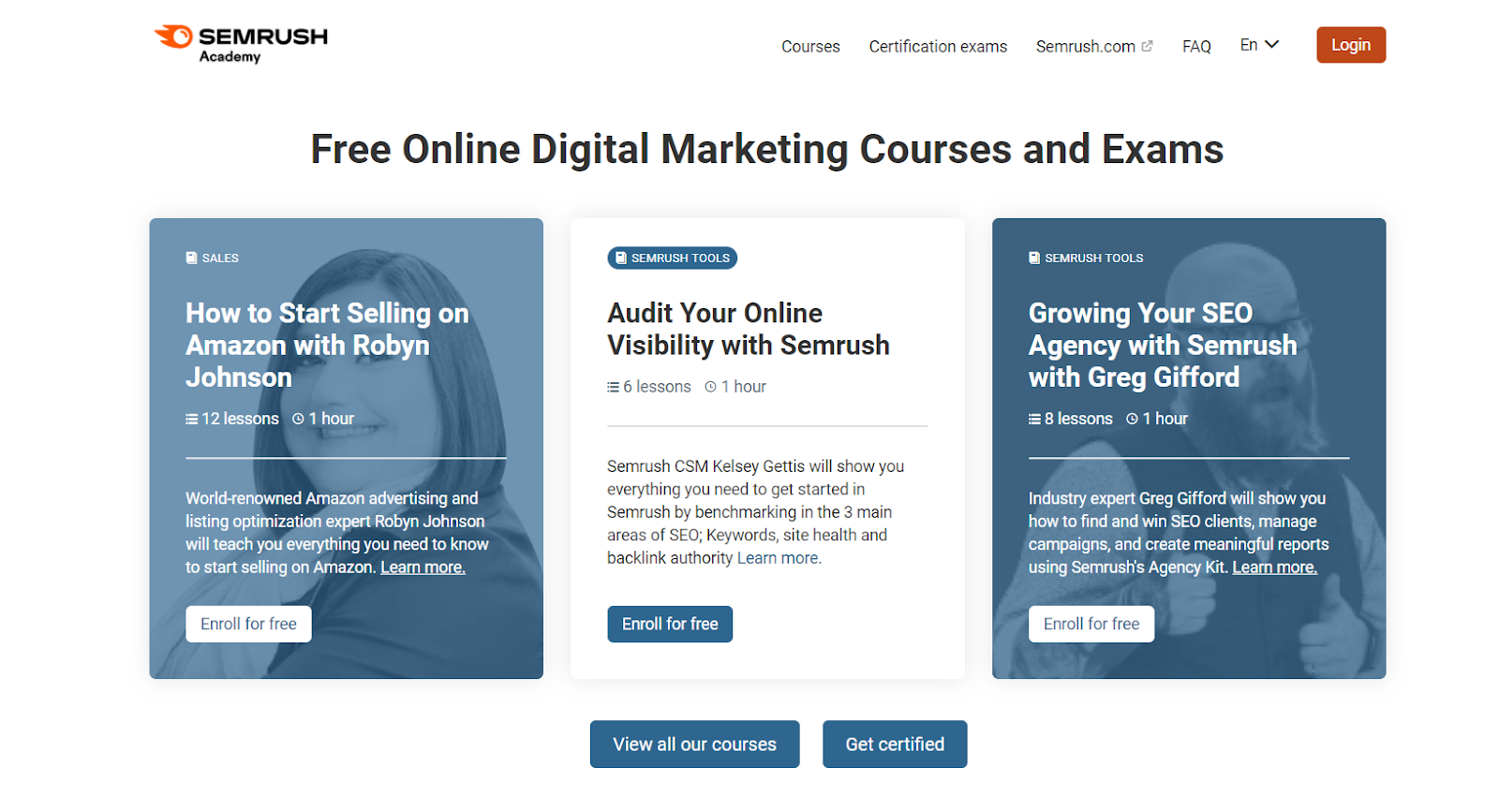 Use online courses to engage your prospects and clients
Use online courses to engage your prospects and clients
You can even use your acquisition channel as an income stream and sell a course your audience needs around your product.
Add quizzes to your Instagram Stories
Over 500 million people aren’t just using Instagram Stories to connect with friends only. They’re using them to interact with their beloved brands too.
Businesses have mastered the art of lead generation by Instagram stories; as Instagram stated, one-third of highly-viewed stories come from businesses.
A great advantage is that they allow you to use engaging formats like polls.
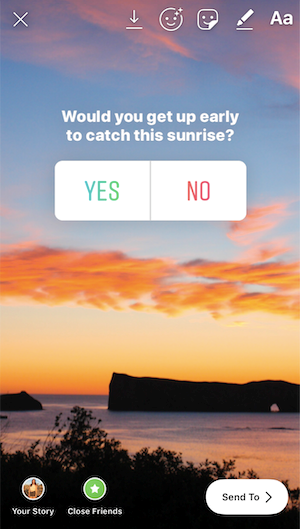 Instagram Polls example; source: Sellfy
Instagram Polls example; source: Sellfy
On top of that, Instagram launched a new Quiz Sticker feature in 2019 to make stories more interactive. The “Quiz Sticker” (a.k.a polling feature) allows users to ask multiple-choice questions from their followers directly from Instagram Stories. The feature enables brands to invite their audience members and ask them any questions. It’s a super fun feature for encouraging audience engagement.
By asking burning questions, you show how much you care for your customers’ opinions. Also, showing that you’re there to solve queries poses you as a trustworthy, human, and kind brand, which stimulates customer loyalty.
Missguided used the sticker to quiz their audience about their brand:
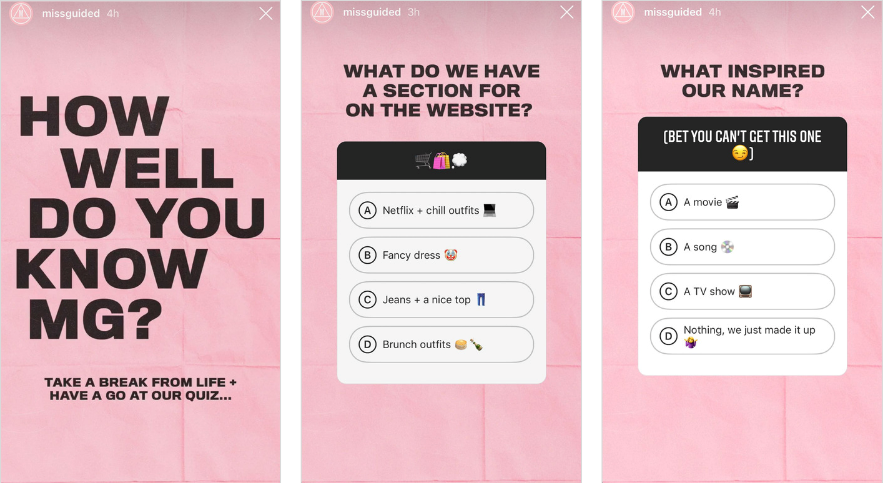 A brand using the Instagram Sticker feature
A brand using the Instagram Sticker feature
Post standalone social media messages
It’s easy to share content with links back to your site — after all, the click-through rate is an impressive social media engagement metric, right?
However, a new social media trend is surfacing for businesses. It’s to share standalone social media posts. That means posting images, graphics, or videos without any link. It could be something funny, inspirational, or encouraging.
Big brands like Anytime Fitness, Starbucks, Domino’s Pizza, and L’oreal Paris are already doing it.
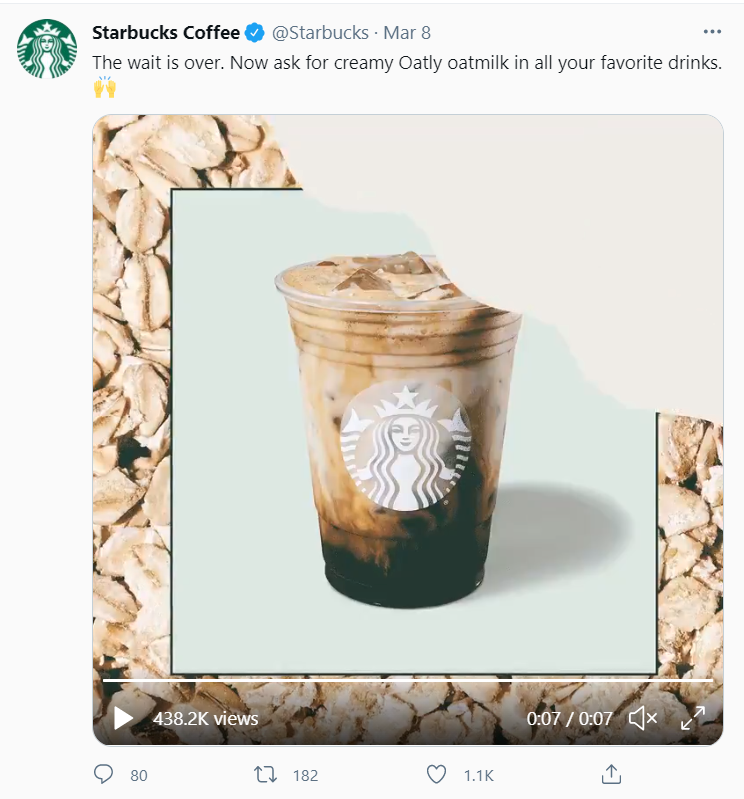 Starbucks sharing a standalone post without links on Twitter
Starbucks sharing a standalone post without links on Twitter
To generate this kind of image or graphics, you can go for Visme, an alternative to Canva, with an ability to generate visual content in minutes.
Generate buzz with mysteries
Generating hype takes work, but it’s a worthy investment. Consider how companies like Apple have ample coverage before launching a product. Rumors roll out, excitement surges, and then — bang! Apple introduces the product, and hysteria breaks out.
The good news is you don’t have to be as big as Apple to build online suspense and impatience. The trick is to sustain a mystery while hinting at fantastic things soon to emerge.
Here are some tactics to help you keep things mysterious:
- tweet enchanting clues;
- put a “Next Event” message on your website for your upcoming product;
- share tiny previews without revealing too much;
- create teaser videos on YouTube;
- get bloggers and influencers to talk about your forthcoming product;
- show the behind-the-scenes development process with fewer details.
While these tactics are great, not all businesses have the time and budget to create so much content. This is where content marketing tools come to the rescue. These tools come in handy to level up your overall digital marketing strategy, from creating content to schedule them.
Run an influencer giveaway
While there are many ways to run a giveaway, one of the most thrilling kinds is influencer giveaways. Brands co-host the giveaway in partnership with an influencer.
To make the influencer giveaway work, you must design it around the brand and influencer’s social image. For instance, Dbrand often collaborates with tech influencers to launch their giveaway on their social media platforms. The company teamed up with Marques Brownlee (MKBHD) as a platform to promote their giveaway.
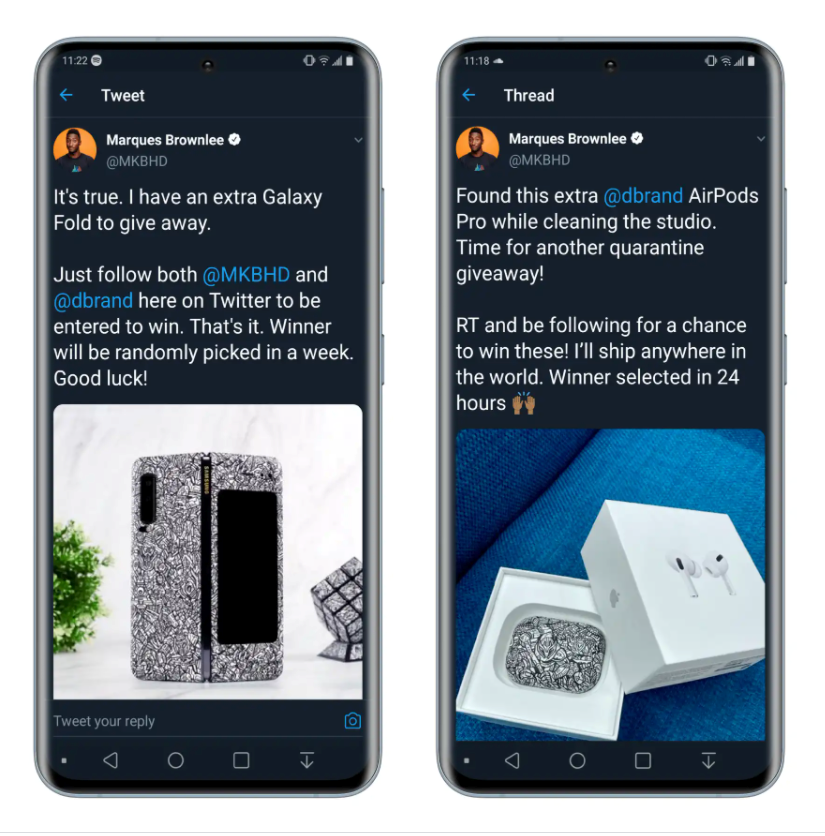 Dbrand promoting their giveaway; source: Vyper
Dbrand promoting their giveaway; source: Vyper
Marques talked about the giveaway on his Twitter, Instagram, and YouTube channel. With this influencer giveaway tactic, Dbrand acquired millions of followers through Marques’ social media channels.
Takeaways
Whatever engagement strategies you choose from the list above, make sure the majority of the content is yours. Also, content from influencers and customers adds a lot. With consistency, soon, you will have a massively engaged audience that will lead to increased sales.
Finally, if you try these tactics, don’t forget to tell us which of them work best for your business.Or is there anything else we forgot to mention on our list? Let us know in the comments.